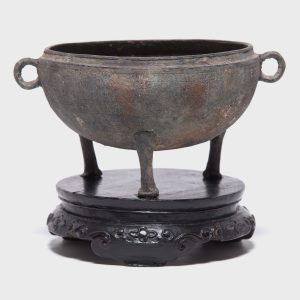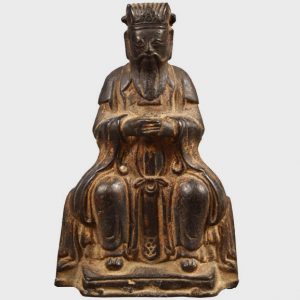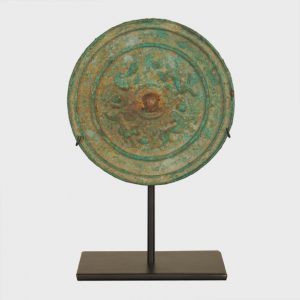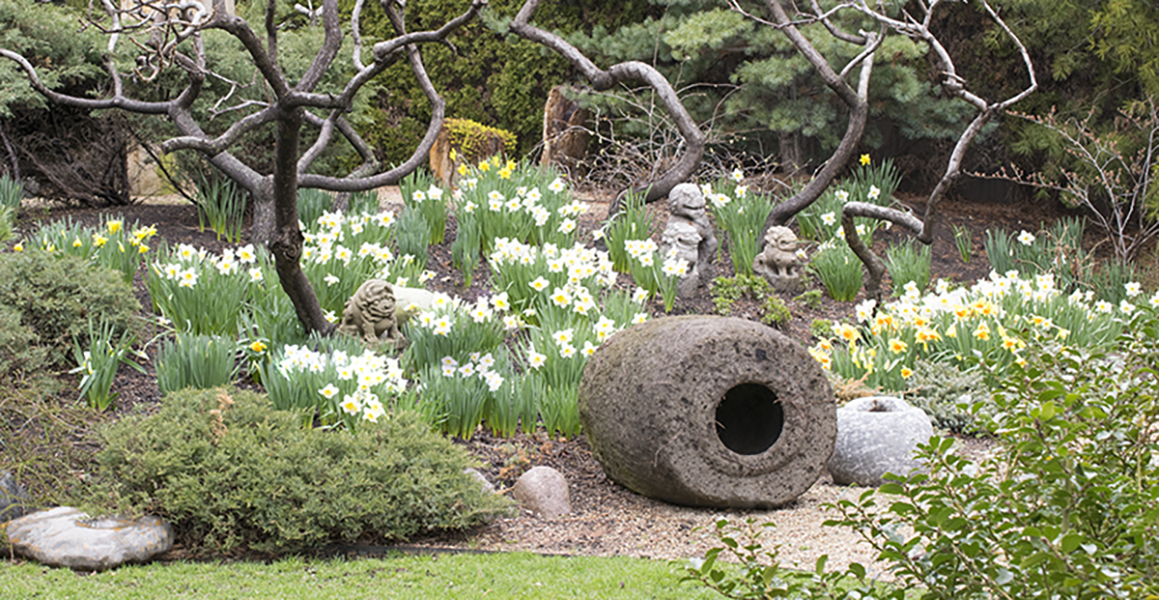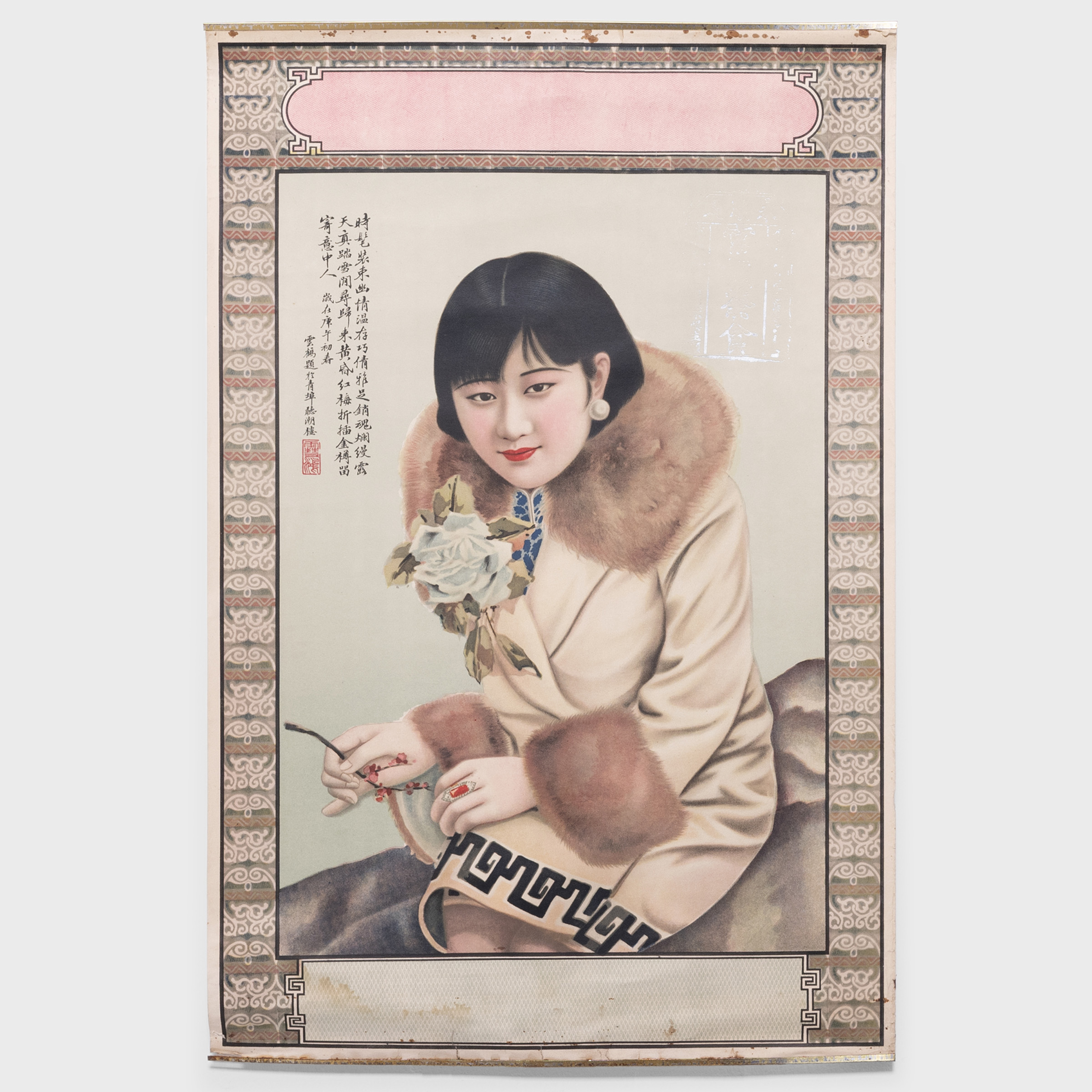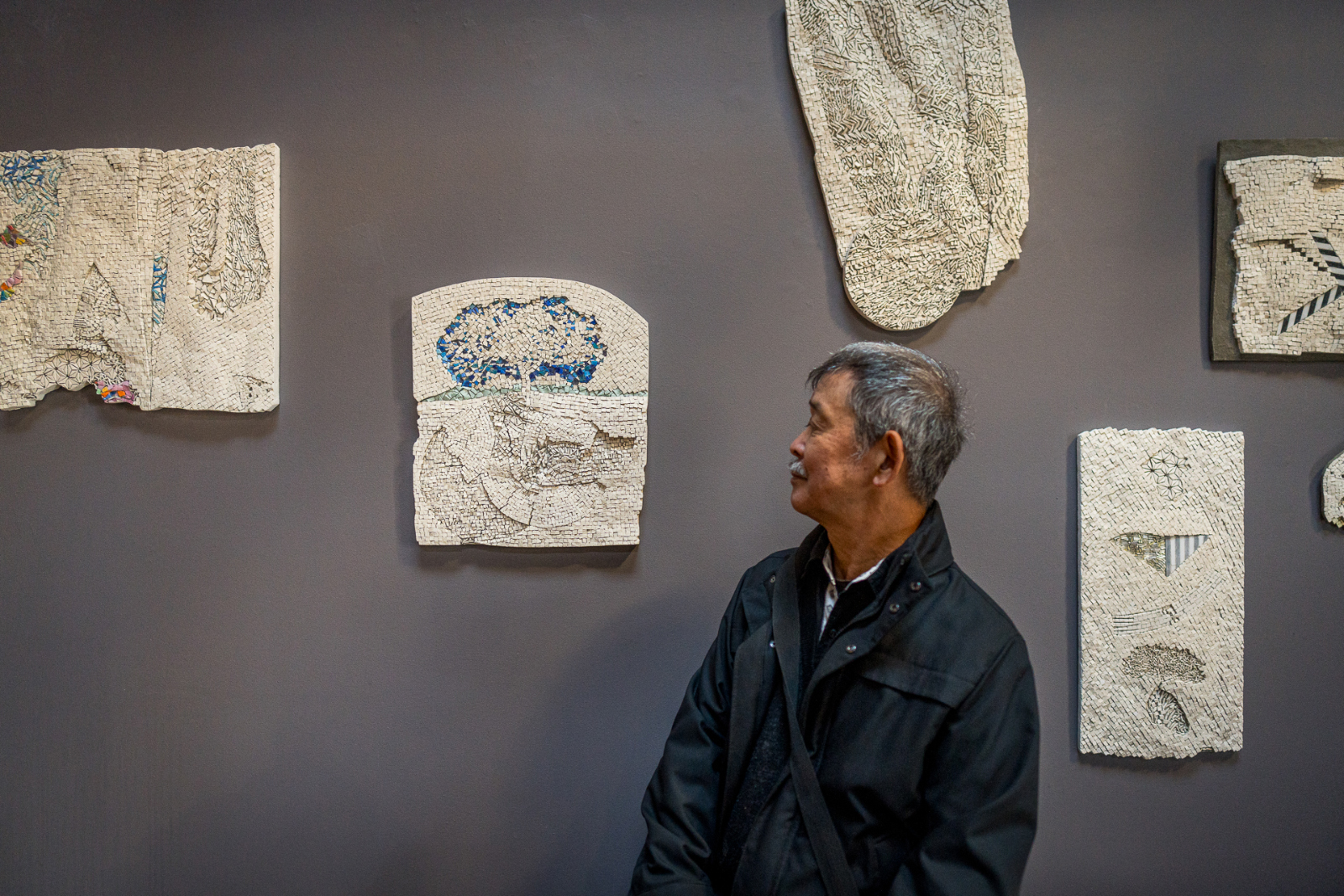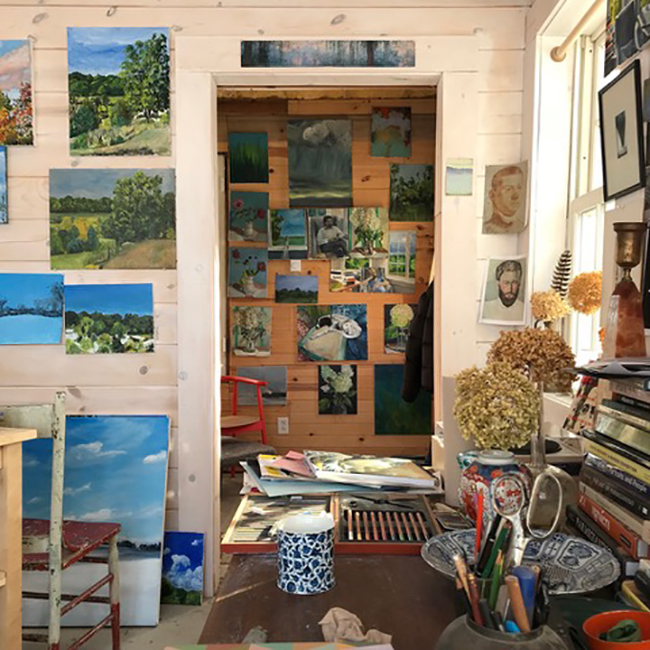
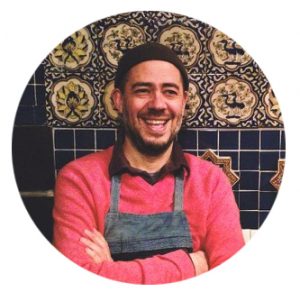
Mario Aranda is an artist and go-to designer for tastemakers—perhaps best know for shaping the look of renowned Chicago fashion boutique, Ikram. Having studied art, architecture and design, Mario says he carries his education with him, wherever he goes, “like a lens.” We spoke with Mario as he focused that lens on a number of artful topics, beginning with a trip to The Art Institute of Chicago to catch the exhibit, “Mirroring China’s Past: Emperors and Their Bronzes.”
The show, spotlighting bronzes from the Shang (1600-1046 B.C.) and Zhou (1046-256 B.C.) periods, is an exploration of the fascinating culture surrounding the vessels used in important spiritual ceremonies.
“I was aware, in walking through the show, that somewhere around 1.3 billion humans view these pieces as defining their identity. These objects hold clues to a consciousness that bubbled up and now encompasses a massive part of the human family. I should also share that my great-grandfather was a Chinese immigrant to Mexico so I am also viewing these objects as reflecting a thread of my own DNA,” he says.
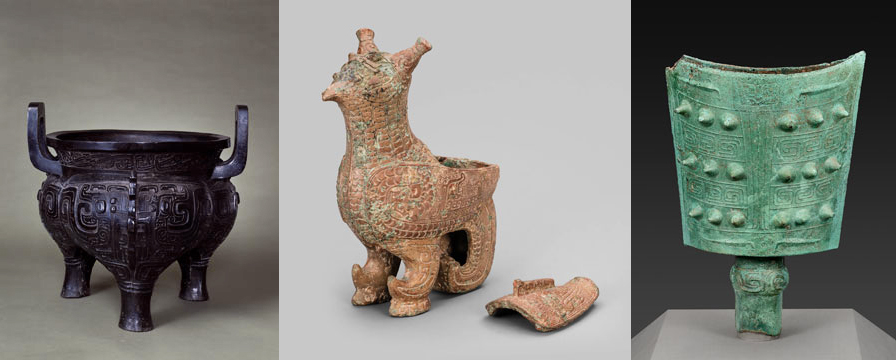
Left: Lobed Tripod Cauldron (Shi Yin li), Mid-Western Zhou dynasty, 927–850 BC. China. Middle: Bird-Shaped Container (zun), late Shang dynasty (13th–11th century BC). Right: Bell (nao), first half of the Zhou dynasty (about 10th–7th century BC). China, probably Hunan province. Photo courtesy The Art Institute of Chicago.
“What one often sees is a kingdom trying to legitimize itself by taking in the antiquities, absorbing them, and then coming up with some aspect of refining the form for the future. That process can be one of clearing up forms or of layering them on top of each other.” says Mario.
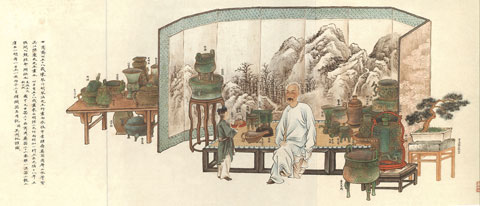
Wu Dacheng. Collected Antiquities at Kezhai Studio (Kezhai jigutu), before 1892. The Shanghai Museum.
“One of the things I love about so much of Chinese culture is the way the past sits in the present,” says Mario. “The show spoke a lot about that. Chinese art history sometimes tries to say ‘we draw these forms from an archetypal, original, source’ but my perception is that the form slowly coalesced though an active interaction with the past. Slow, incremental changes from Neolithic to present. ”
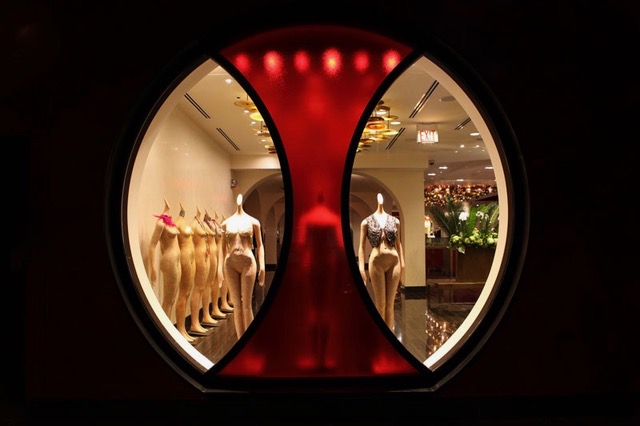
The Chicago boutique, Ikram, designed by Mario Aranda. Photo: Courtesy of Mario Aranda.
“I have built a sense of where to put things in terms of history, cultural context and meaning,” says Mario. “I first look at objects to feel their place in that structure. Do they ring true to what I know of that time and place? How do they further my knowledge of that time and place? What I look for in the object itself is that flash of beauty and resonant life that lets me know the maker was feeling mastery, clarity. These objects communicate something over time and place. It is up to the viewer to wonder why we are so moved. Are we projecting a fantasy on these objects or did we get a bolt of meaning communicated by the maker?”
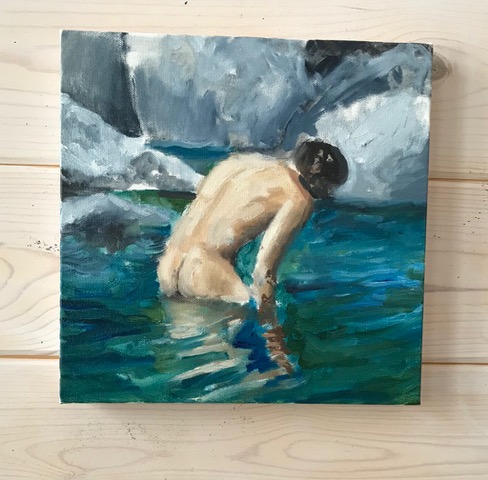
One of the designer’s own paintings. Photo: Courtesy of Mario Aranda.
Among his many creative endeavors, Mario owned and operated an antique store in Wicker Park/Bucktown, from the late nineties through the early aughts, and he remains a passionate collector. Some of his favorite treasures to hunt include Southeast Asian textiles, Japanese ceramics and furniture, West and Central African sculpture, Italian paintings and sculptures, folk art, art pottery, paintings by friends, and “books on top of books,” he says.
“There has not been a favorite that has dominance over my life, it’s more that I run with an interest, researching, hunting, absorbing till I come up for breath.”
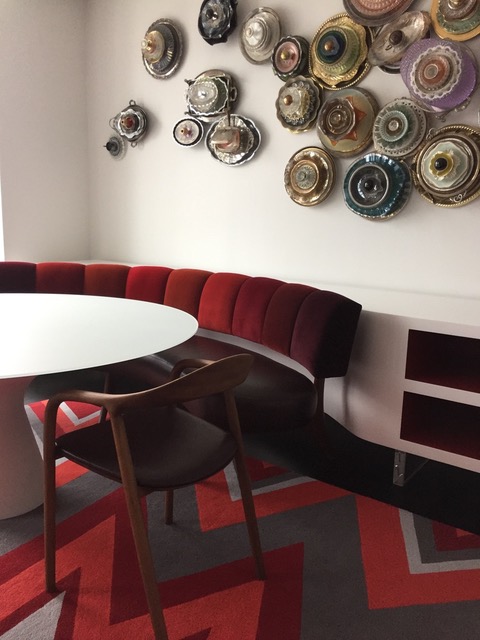
An interior designed by Mario Aranda. Photo: Courtesy of Mario Aranda.
Though designers frequently list travel as a favorite source of inspiration, Mario shared an interesting twist on the theme. He explains:
“I really enjoy re-visiting cities and their museums. There is that first youthful rush to get the encyclopedic exposure to culture. Now it’s time for the slow savoring, the interaction with memories, the being surprised by the seemingly familiar, noticing what was overlooked. I remember trying to read Proust in my twenties, I was overwhelmed and got a feeling of claustrophobia. In the last couple of decades, I’m 51, the tone and approach has opened up to me. Stop, notice, let your mind wander, let parts of conversations, colors, smells, connect you to your past. Let your moment get enriched by this.”
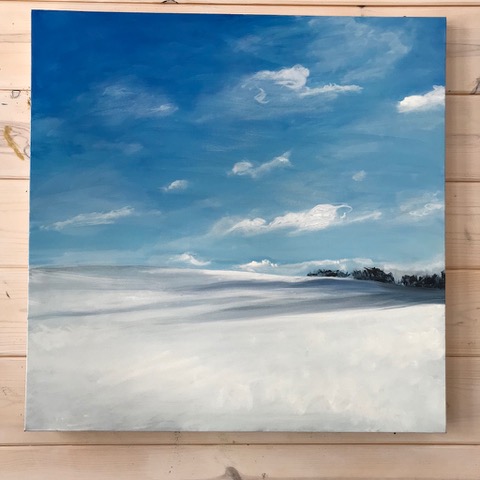
One of the designer’s own paintings. Photo: Courtesy of Mario Aranda.
“I just returned from Mexico,” explains the designer. “Land of ancestors, land of a language I speak more and more fluidly. I heard Spanish in the home as a child, never learned to speak it until my 20’s, and now my father and I pepper our conversations with his first language. Mexico feels foreign and deeply familiar at the same time. It is a country of layers, so many cultures, languages (68 recognized languages in Mexico), disparate traditions interacting.”
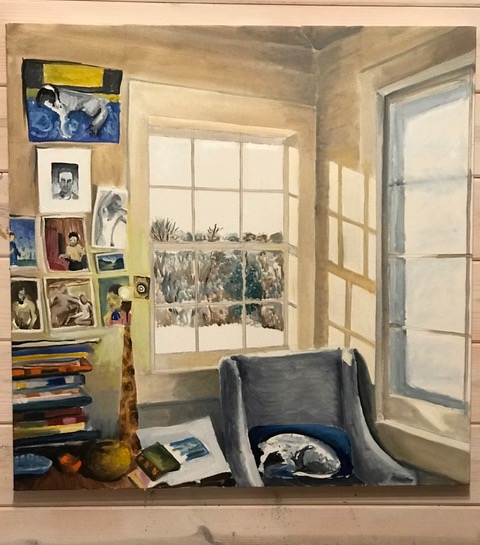
One of the designer’s own paintings. Photo: Courtesy of Mario Aranda.
“When I fly over that land looking at those mountains, tight valleys, jungle, desert, suburbs, pre-Columbian temples, oil refineries and tiny farms, I feel a gentle love for the place. The humor and word-play, and twinkly eyes of my grandmother show up in conversations with boat operators and food vendors. I can walk by a dusty farm and hear a radio play the melancholy ballads my parents’ sang to each other when I was a kid. As far as the colors and foods… I carry that sensibility in me, it just gets reinforced every time I go back.”
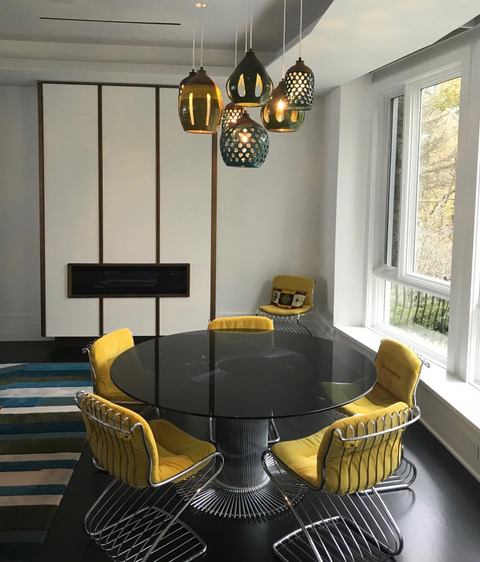
An interior designed by Mario Aranda. Photo: Courtesy of Mario Aranda.
Mirroring China’s Past: Emperors and Their Bronzes, runs through May 13th, 2018 at the Art Institute of Chicago.

Shop the Story
- Bronze Vessel with Tripod Feet=
- Bronze Ancestor Figure
- Bronze Mirror on Stand=
